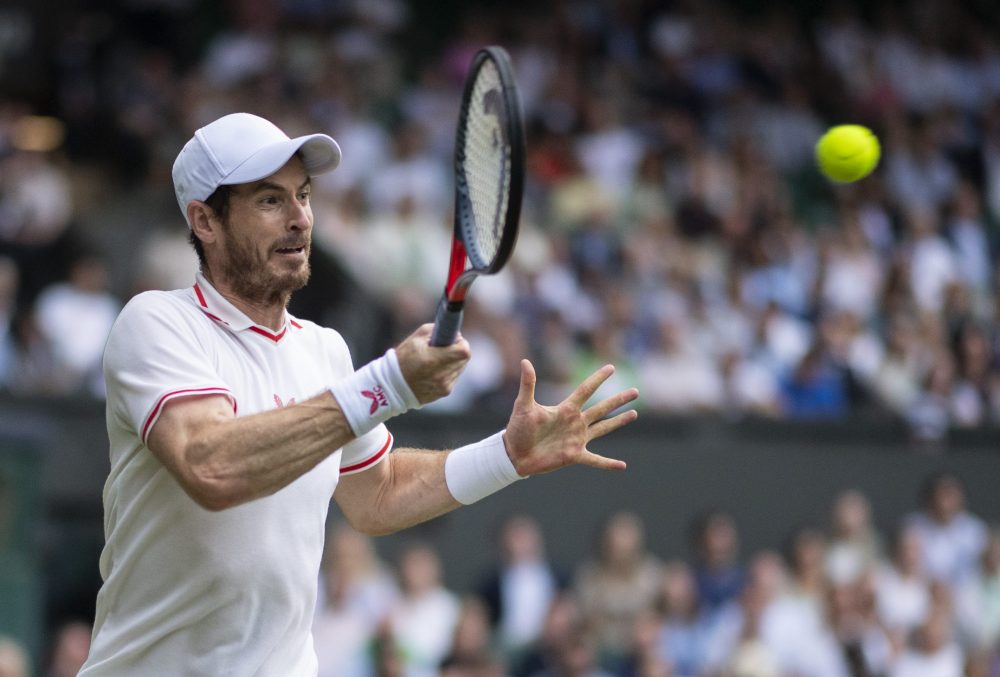Andy Murray believes carefully planning his training sessions to avoid overload will help him achieve his goal of returning back inside the world’s top 32.
The three-time Grand Slam champion has climbed up the rankings this week by 18 places to 52nd in the world following his run to the final of the Qatar Open where he was denied the title by Daniil Medvedev. At the tournament, he defeated Lorenzo Sonego, Alexander Zverev and Australian Open quarter-finalist Jiri Lehecka. It was the first time the Brit has reached the final of a Tour event since June.
Murray was scheduled to return to action this week at the Dubai Tennis Championships but has since withdrawn from the event. Officially he has cited a hip issue as a reason he is not playing, however, it is understood that his decision is only a precautionary measure and is not linked to his previous problems. Murray has undergone two surgeries on his hip and now plays with a metal rod inserted into his joint.
“The matches I had last week were physically pretty demanding,” Murray told The Times.
“It was five matches in six days – the last time I did that was in Stuttgart (in June) but because of the surface (grass), the matches were physically really not that challenging.
“I had an issue then with my abdominal muscle and on Friday evening in Doha I was feeling my abs a little bit after the semi-final.
“Because of the experience I had last year, it was clearly a load-related thing because of the amount of tennis I played in a short period, so I was a bit worried about that.”
The former world No.1 says he needs to be more careful about putting his body under too much pressure due to his age and previous injury problems. Instead, Murray is taking a more structured approach to how he trains.
Using data tracking to analyze his workout plans and focusing on specific areas, the hope is that he can tune up his game without suffering any setbacks. He has already made progress this season by winning six out of nine matches played. Besides Doha, he also reached the third round of the Australian Open before losing to Roberto Bautista Agut.
As for goals for the future, Murray hopes to climb further up the world rankings and be seeded for a Grand Slam once again, especially Wimbledon where he feels he has ‘a better opportunity for a deep run.’ He is a two-time champion at SW19 and has won a total of 60 main draw matches at the event.
“I do believe that this is allowing me to be in much better shape,” Murray explained about his approach to training. “I know exactly when I go on the court, how much time I’m going to spend on it and which drills and exercises I do are going to get me to certain heart-rate zones.
“Rather than just blasting yourself twice, once on the court and once in the gym, sometimes I only need to do it on the court if I’m getting the right stimulus from the tennis session.
“My feeling on Wimbledon is that less players play well on grass. More of the guys are comfortable on the hard courts and that probably increases my chances.
“I’m not saying I would expect to win the French Open (on clay) if I played, but with Wimbledon, there is certainly a better opportunity to have a deep run.
“Yes, I have some niggles and my body doesn’t feel amazing, but it’s coped really well with the first few tournaments of the year that have been really demanding.
“My belief is that my body would be fine to play seven five-set matches if needs be. Granted, if they are six-hour ones, probably not, but regular five-set matches, I’d be able to cope with that.”
To guarantee a seeding for a Grand Slam a player must be ranked inside the world’s top 32 before the main draw cut-off occurs. The last time Murray was in this position was back in April 2018.
Murray is set to return to action next month at Masters 1000 events in Indian Wells and Miami.






